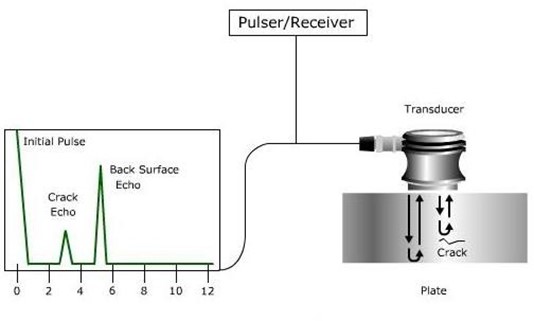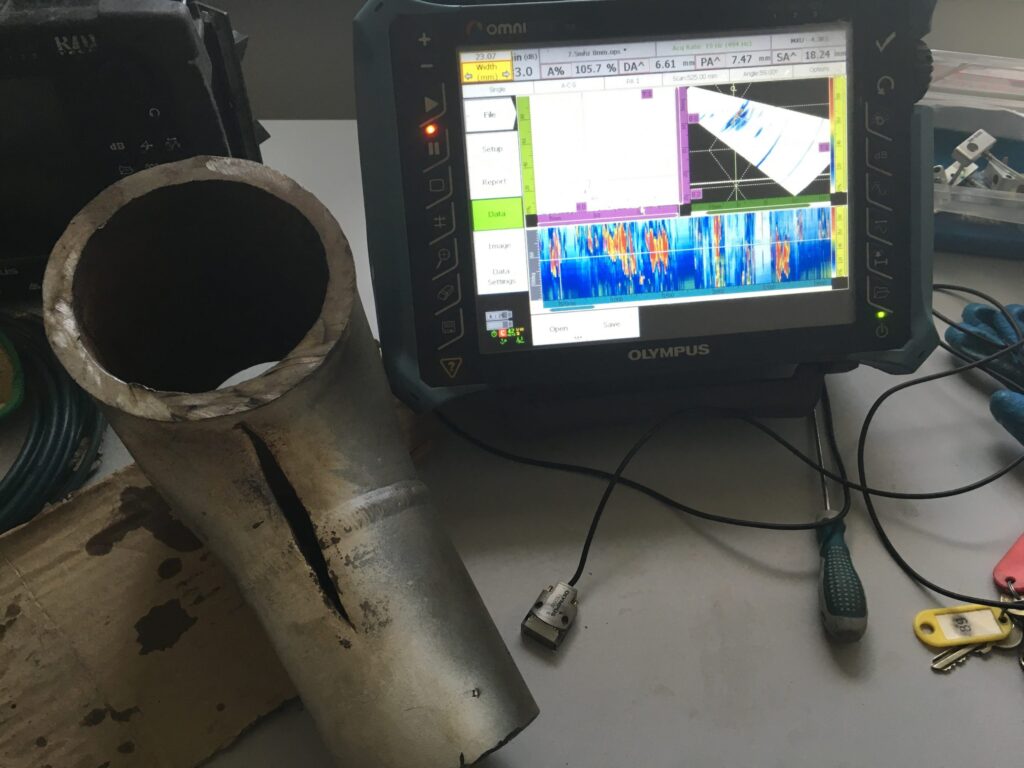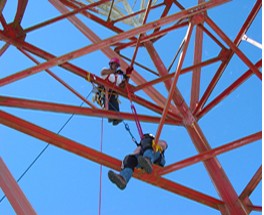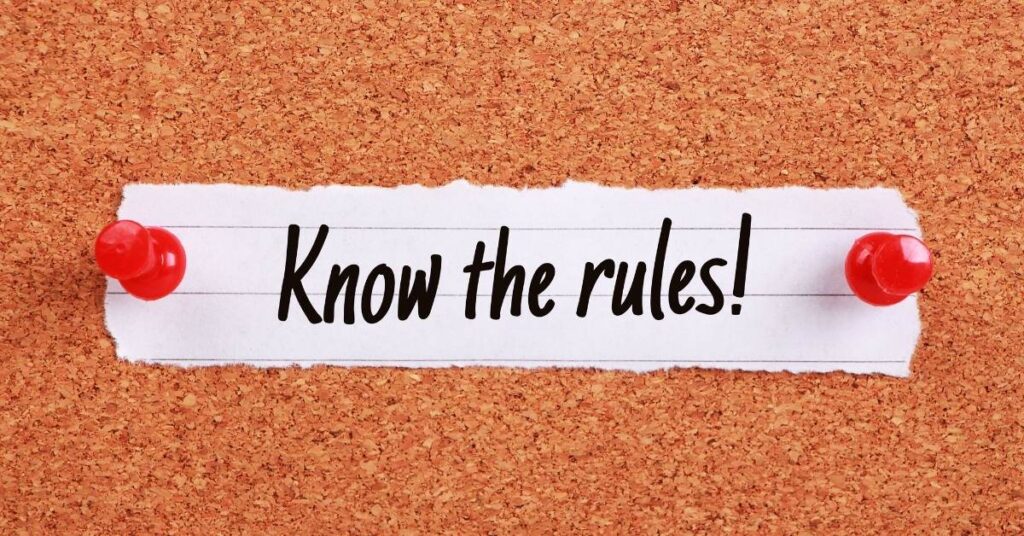Codes and Standards in NDT Industry

Codes and Standards Bodies Involved in NDT Industry
Most countries have one or more organizations (“standards bodies”) that develop and publish technical industrial standards. Some don’t, and those usually reference existing codes and standards for their manufacturing, fabrication and construction projects. In the United States, these organizations are usually independent organizations from private industry, but in many countries they are government agencies.
The listing below, which is not all-inclusive, provides examples of some of the standards bodies that are commonly used by NDT personnel.
Below the name and web address of each standards body is a brief description of that body. These are examples of some of the NDT-related codes, standards or specifications published by that organization. The websites of most of these bodies have a “publications” link that can be used to find other codes and standards published by that body. All of the organizations listed here use industry subject-matter experts and a consensus process in the development of their codes and standards.
THE AMERICAN SOCIETY FOR NONDESTRUCTIVE TESTING, INC. (ASNT)
The American Society for Nondestructive Testing is a member-based, non-profit professional society that provides NDT-related reference materials, technical conferences and the following certification documents. ASNT does not publish standards that describe how to perform NDT tasks; those are published by ASTM International and are discussed in that section of this web page.
ASTM INTERNATIONAL (www.astm.org)
ASTM International (formerly the American Society for Testing and Materials) is one of the largest voluntary standards development organizations in the world, providing technical standards for materials, products, systems, and services. Over 180 ASTM NDT standards are published in the ASTM Annual Book of Standards, Volume 03.03, Nondestructive Testing. ASTM defines three of their document categories as follows:
- A “guide” is a compendium of information or series of options that does not recommend a specific course of action. A guide increases the awareness of information and approaches in a given subject area.
- A “practice” is a definitive set of instructions for performing one or more specific operations or functions that does not produce a test result. Examples of practices include, but are not limited to: application, assessment, cleaning, collection, decontamination, inspection, installation, preparation, sampling, screening and training.
- A “test method” is a definitive procedure that produces a test result. Examples of test methods include, but are not limited to: identification, measurement and evaluation of one or more qualities, characteristics or properties.
Some of the more commonly used ASTM NDT standards are as follows. Additional standards can be found in the ASTM Annual Book of Standards, Volume 03.03.
|
ASTM E709: |
Standard Guide for Magnetic Particle Testing |
|
ASTM E1444: |
Standard Practice for Magnetic Particle Testing |
|
ASTM E165: |
Standard Practice for Liquid Penetrant Examination for General Industry |
|
ASTM E1417: |
Standard Practice for Liquid Penetrant Testing |
|
ASTM E1208: |
Standard Practice for Liquid Penetrant Testing using the Lipophilic Post-Emulsifiable Process |
|
ASTM E1209: |
Standard Practice for Liquid Penetrant Testing using the Water-Washable Process |
|
ASTM E1210: |
Standard Practice for Liquid Penetrant Testing using the Hydrophilic Post- Emulsifiable Process |
|
ASTM E1219: |
Standard Practice for Liquid Penetrant Testing using the Solvent-Removable Process |
|
ASTM E114: |
Practice for Ultrasonic Pulse-Echo Straight-Beam Examination by the Contact Method |
|
ASTM E164: |
Standard Practice for Contact Ultrasonic Testing of Weldments |
|
ASTM E213: |
Standard Practice for Ultrasonic Testing of Metal Pipe and Tubing |
|
ASTM E2375: |
Standard Practice for Ultrasonic Testing of Wrought Products |
|
ASTM E94: |
Guide for Radiographic Examination |
|
ASTM E1742: |
Practice for Radiographic Examination |
|
ASTM E1000: |
Guide for Radioscopy |
|
ASTM E1255: |
Practice for Radioscopy |
|
ASTM E1030: |
Test Method for Radiographic Examination of Metallic Castings |
|
ASTM E1032: |
Test Method for Radiographic Examination of Weldments |
|
ASTM E999: |
Guide for Controlling the Quality of Industrial Radiographic Film Processing |
|
ASTM E142: |
Method for Controlling Quality of Radiographic Testing |
|
ASTM E2007: |
Standard Guide for Computed Radiography |
|
ASTM E2738: |
Standard Practice for Digital Imaging and Communication Nondestructive Evaluation (DICONDE) for Computed Radiography (CR) Test methods |
|
ASTM E268: |
Electromagnetic testing |
|
ASTM E426: |
Practice for Electromagnetic (Eddy-Current) Examination of Seamless and Welded Tubular Products, Austenitic Stainless Steel and Similar Alloys |
|
ASTM E1962: |
Standard Practice for Ultrasonic Surface Testing using Electromagnetic Acoustic Transducer (EMAT) Techniques |
The Table of Contents for ASTM Volume 03.03 (2012) and ordering information can be found
online HERE.
AMERICAN SOCIETY OF MECHANICAL ENGINEERS (ASME) www.asme.org
The American Society of Mechanical Engineers is a not-for-profit professional organization that enables collaboration, knowledge sharing and skill development across all engineering disciplines, while promoting the vital role of the engineer in society. ASME codes and standards, publications, conferences, continuing education and professional development programs provide a foundation for advancing technical knowledge and a safer world. ASME publishes multiple codes and standards including (but not limited to) the following documents.
The “ASME Boiler & Pressure Vessel Code” (BPVC). The 2010 edition of the BPVC with 2011 addenda was made available in July 2011. This code is made up of 12 sections, or “books,” covering the following subjects:
|
I. |
Power Boilers |
|
II. |
Materials |
|
III. |
Rules for Construction of Nuclear Facility Components |
|
IV. |
Heating Boilers |
|
V. |
Nondestructive Examination |
|
VI. |
Recommended Rules for the Care and Operation of Heating Boilers |
|
VII. |
Recommended Guidelines for the Care of Power Boilers |
|
VIII. |
Pressure Vessels |
|
IX. |
Welding and Brazing Qualifications |
|
X. |
Fiber-Reinforced Plastic Pressure Vessels |
|
XI. |
Rules for In-service Inspection of Nuclear Power Plant Components |
|
XII. |
Rules for Construction and Continued Service of Transport Tanks |
The BPVC is now published biennially in odd-numbered years without addenda in the intervening year.
ASME B31.1, Power Piping. This code contains requirements for piping systems typically found in electric power-generating stations, industrial institutional plants, geothermal heating systems, and heating and cooling systems.
ASME B31.3, Process Piping. This Code contains requirements for piping typically found in petroleum refineries; chemical, pharmaceutical, textile, paper, semiconductor and cryogenic plants; and related processing-plant terminals.
ASME standards can be purchased through the ASME catalog page HERE.
AMERICAN PETROLEUM INSTITUTE (API) www.api.org
The American Petroleum Institute is a national trade association that represents all aspects of America’s oil and natural-gas industry, including producers, refiners, suppliers, pipeline operators, marine transporters and service and supply companies. Among the standards that API publishes are the following:
|
API 510: |
Pressure Vessel Inspection Code: In-Service Inspection, Rating, Repair and Alteration |
|
API 570: |
Piping Inspection Codes: In-service Inspection, Rating, Repair, and Alteration of Piping Systems |
|
API 650: |
Welded Tanks for Oil Storage |
|
API 653: |
Tank Inspection, Repair, Alteration, and Reconstruction |
|
API 1104: |
Welding of Pipelines and Related Facilities |
API standards can be purchased online HERE.
AMERICAN WELDING SOCIETY (AWS) www.aws.org
The American Welding Society is a nonprofit organization with the goal of advancing the science, technology and application of welding and related joining disciplines. AWS provides certification programs for welding inspectors, supervisors, educators, etc., and publishes multiple standards, many of which contain procedures for the application of nondestructive testing methods and techniques above and beyond visual inspection. A few of their standards are listed here:
|
AWS D1.1: |
Structural Welding Code – Steel |
|
AWS D1.2: |
Structural Welding Code – Aluminum |
|
AWS D1.3: |
Structural Welding Code – Sheet Steel |
|
AWS D1.5: |
Bridge Welding Code |
|
AWS D1.6: |
Structural Welding Code – Stainless Steel |
AWS standards can be purchased through the AWS bookstore.
AEROSPACE INDUSTRIES ASSOCIATION (AIA) www.aia-aerospace.org
The Aerospace Industries Association is a trade association with more than 100 major aerospace and defense member companies. These companies embody every high-technology manufacturing segment of the U.S. aerospace and defense industry from commercial aviation and avionics, to manned and unmanned defense systems, to space technologies and satellite communications.
The AIA publishes multiple aviation and aerospace-related standards, two of which are shown below:
NAS 410, NAS Certification & Qualification of Nondestructive Test Personnel. This employer-based certification standard establishes the minimum requirements for the qualification and certification of personnel performing nondestructive testing (NDT), nondestructive inspection (NDI), or nondestructive evaluation (NDE) in the aerospace manufacturing, service, maintenance and overhaul industries. In 2002, NAS 410 was harmonized with European Norm 4179 (listed in the CEN section), so that the requirements in both documents are identical.
NAS 999, Nondestructive Inspection of Advanced Composite Structures. This specification establishes the requirements for non-destructive inspection (NDI), NDI standards, NDI methods, and NDI acceptance criteria.
AIA standards can be purchased through Global Engineering Documents.
NATIONAL BOARD OF BOILER AND PRESSURE VESSEL INSPECTORS
(NBBI) www.nationalboard.org
The National Board of Boiler and Pressure Vessel Inspectors is a non-profit organization that promotes greater safety to life and property through uniformity in the construction, installation, repair, maintenance and inspection of pressure equipment. The National Board membership oversees adherence to laws, rules and regulations relating to boilers and pressure vessels. NBBI provides training, and it issues In- service and New Construction commissions for Authorized Inspectors (AIs), Authorized Nuclear Inspectors (ANIs) and Authorized Nuclear In-service Inspectors (ANIIs).
NBBI publishes the “National Boiler Inspection Code” (NBIC), which provides standards for the installation, inspection and repair and/or alteration of boilers, pressure vessels and pressure-relief devices, can be purchased online through the NBBI website.
INTERNATIONAL ORGANIZATION FOR STANDARDIZATION (ISO) www.iso.org
The International Organization for Standardization, the world’s largest developer and publisher of International Standards, is a non-governmental organization located in Geneva, Switzerland. ISO is a network of the national standards institutes of 161 countries, one member per country. Many of the ISO member institutes are part of the governmental structure of their countries, or are mandated by their government. Other members have their roots uniquely in the private sector, having been set up by national partnerships of industry associations. Three of the many ISO standards are listed below:
ISO 9712, Non-destructive testing – Qualification and certification of personnel. This International standard, which was revised in 2012, provides the requirements for the NDT certification of NDT personnel by an accredited third-party certification body that conforms to the requirements of ISO/IEC 17024, Conformity assessment — General requirements for bodies operating certification of persons.
ISO/IEC 17024, Conformity assessment – General requirements for bodies operating certification of persons. This international standard was developed with the objective of achieving and promoting a globally accepted benchmark for organizations operating certification of persons.
ISO/IEC 17011, Conformity assessment – General requirements for accreditation bodies accrediting conformity assessment bodies. This international standard specifies the general requirements for accreditation bodies. ANSI, the U.S. accreditation body that has accredited ASNT, is accredited under ISO 17011 and is a member of the International Accreditation Forum (IAF), the world association of Conformity Assessment Accreditation Bodies in the fields of management systems, products, services, personnel and other similar programs of conformity assessment.
EUROPEAN COMMITTEE FOR STANDARDIZATION (CEN) www.cen.eu
The European Committee for Standardization is a business facilitator in Europe, removing trade barriers for European industry and consumers. Its mission is to foster the European economy in global trading, the welfare of European citizens and the environment. CEN is a major provider of European Standards and technical specifications. It is the only recognized European organization according to Directive 98/34/EC for the planning, drafting and adoption of European Standards in all areas of economic activity with the exception of electro-technology and telecommunication. CEN’s 31 National Members work together to develop voluntary European Standards (ENs).
Standards (Norms) developed by CEN are considered “harmonized standards” that are required to be accepted by all member nations in the European Union. The following two ENs are NDT certification standards:
EN 4179, Aerospace series – Qualification and approval of personnel for non-destructive testing. This employer-based certification standard is the European version of NAS 410, which was described under the Aerospace Industries Association section on this web page.
EN 473, Non-destructive testing – Qualification and certification of NDT personnel – General principles. This European Standard established principles for the third-party (“central”) qualification and certification of personnel who perform industrial non-destructive testing (NDT) by an accredited third-party certification body. Under EN 473, certification bodies had to administer procedures for certification according to the requirements of EN 473 and must fulfill the requirements of EN ISO/IEC 17024.
EN ISO 9712, which was approved in June 2012, replaced EN 473 as the European harmonized standard (Norm) for NDT central certification effective 1 January 2012. EN ISO 9712 permits the use of current EN 473 certifications until the certificate holders’ next renewal period, at which time they must recertify in accordance with the EN ISO 9712 requirements. EN ISO 9712 and ISO 9712 are identical except that EN ISO 9712 has been approved as a harmonized standard for use under the European Pressure Equipment Directive 97/23/EC.
To find a full listing of CEN standards relating to NDT, go HERE and type ‘non-destructive testing’ in the “Phrase in English title” box.
EUROPEAN PRESSURE EQUIPMENT DIRECTIVE
(PED) http://ec.europa.eu/enterprise/sectors/pressure-and-gas/documents/ped/
The Pressure Equipment Directive (97/23/EC) was adopted by the European Parliament and the European Council in May 1997 and became obligatory throughout the European Union (EU) on 29 November 1999. The purpose of the directive (European law) is to harmonize national laws of the member states of the EU regarding the design, manufacture, testing and conformity assessment of pressure equipment and assemblies of pressure equipment. It applies to the design, manufacture and conformity assessment of pressure equipment and assemblies with a maximum allowable pressure greater than 0.5 bar (~7.25 psi).
The full text of the PED, which is made up of 21 articles and seven annexes, can be found HERE. For information on nondestructive testing, the PDF can be searched using “non-destructive” as a keyword.
There are also ten sets of guidelines in response to specific inquiries for interpretation of the PED text. Click HERE for the index for these guidelines.
For a more complete explanation of the PED and how it relates to U.S. NDT companies, see the European Pressure Equipment Directive web page.
STANDARDS BODIES FROM OTHER NATIONS
The number of countries having multiple NDT-related standards bodies is far too large to address here. A listing of other national bodies may be found at http://www.ses- standards.org/displaycommon.cfm?an=1&subarticlenbr=54.
REGULATORY AGENCIES
In instances where there are extreme issues involving public safety, the U.S. government may create regulations above and beyond those provided by industry codes and standards. Two such examples of this are the control and use of radioactive materials and the transport of hazardous liquids and gasses. The government agencies responsible for oversight on these two subjects are the U.S. Nuclear Regulatory Commission (USNRC) and the U.S. Department of Transportation (USDOT), respectively.
The regulations for both of these organizations can be found in the Code of Federal Regulations (CFR). There are 50 “Titles” in the CFR, with the USNRC regulations being under Title 10, Energy, and the USDOT regulations being under Title 49, Transportation.
The USNRC portion of Title 10 is Parts 1-50. As a minimum, radiographers should be familiar with the following parts:
Title 10, Part 34 (10CFR34): Licenses for industrial radiography and radiation safety requirements for industrial radiographic operations;
10CFR20: Standards for protection against radiation; and 10CFR21: Reporting of defects and noncompliance.
These NRC regulations apply to radioactive materials only; the NRC does not address radiation such as X-radiation, which is generated by electromagnetic means. Electromagnetic radiation is governed by the Suggested State Regulations for Control of Radiation (SSRCR), which is addressed below.
The USDOT portion of Title 49 is under Parts 186-199, and the hazardous liquids and gasses Parts are as follows:
49CFR192: Transportation of natural and other gas by pipeline: minimum Federal safety standards; and
49CFR195: Transportation of hazardous liquids by pipeline.





Responses